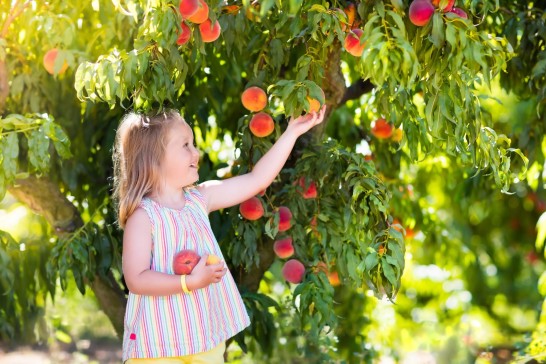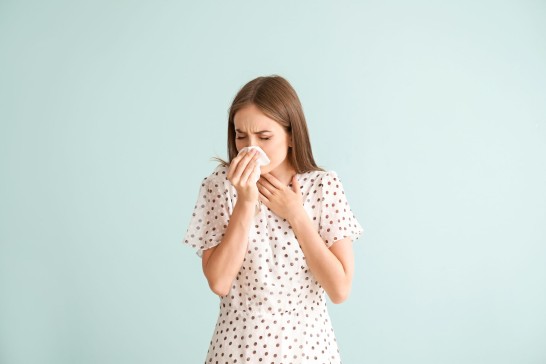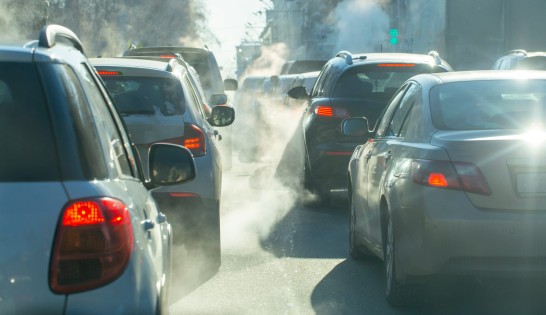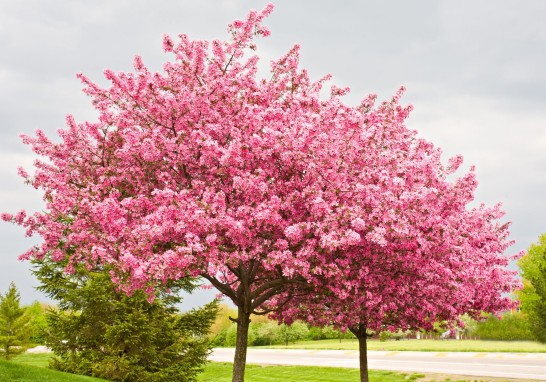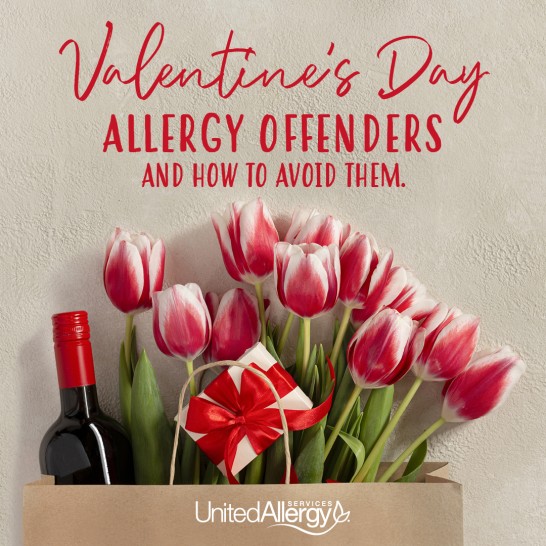A Deep Dive into Summertime Allergies
As the warmth of summer graces us with its presence, many of us are eager to embrace outdoor activities and soak up the sun. However, along with the barbecues, beach days, and sunny strolls, comes an uninvited guest: allergies. For many people, summer is synonymous with sniffling, sneezing, itchy eyes, and other symptoms that signal the onset of seasonal allergies. Let’s delve into what exactly causes summertime allergies, how they impact us, and what we can do to manage them better.
The Cause: Summer Allergens
Seasonal allergies, also known as hay fever or allergic rhinitis, are triggered by allergens—substances that the immune system mistakenly identifies as harmful. When the body encounters these allergens, it responds by producing a type of antibody called Immunoglobulin E (IgE), leading to an allergic reaction.
During the summer months, the primary culprits are pollens from grasses, weeds, and trees. While spring is most commonly associated with tree pollen allergies, summertime often sees a rise in grass pollens (such as Timothy grass, Kentucky bluegrass, and ryegrass) and weed pollens (like ragweed, sagebrush, and pigweed). Mold spores, which thrive in warm, humid environments, also become more prevalent during summer, contributing to allergic symptoms.
The Impact: Symptoms of Summertime Allergies
The allergic reaction sparked by these allergens can result in a variety of allergy symptoms, many of which can be quite discomforting. These symptoms typically include:
- Sneezing
- Runny or congested nose
- Itchy, watery, or red eyes
- Coughing
- Itchy throat or ears
- Fatigue
These symptoms can severely affect an individual’s quality of life, leading to disturbed sleep, irritability, and an inability to fully enjoy outdoor activities during the summer season.
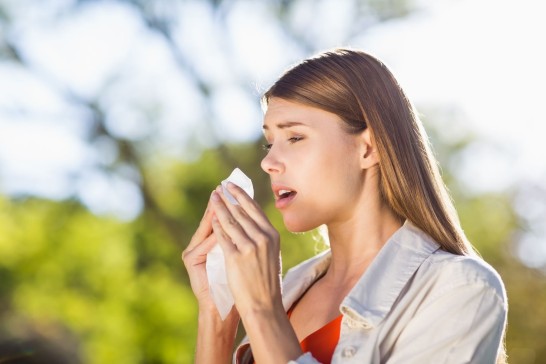
Managing Summertime Allergies
Various strategies can help manage the symptoms of seasonal allergies and make your summer a lot more enjoyable.
1. Awareness and Avoidance
Stay updated on local pollen forecasts available online such as the United Allergy Service Pollen Forecast or through mobile apps such as myAllergyPal®, and try to limit your outdoor activities on high pollen count days. Additionally, during these peak periods, keep your windows closed and use air conditioning to keep allergens at bay.
2. Allergy Medication
Over-the-counter antihistamines can be effective for relieving allergy symptoms like sneezing, itching, runny nose, and watery eyes. Decongestants may also help to relieve a stuffy nose. For those with severe symptoms, a provider may prescribe stronger medications or recommend allergy shots (immunotherapy).
3. Good Hygiene Practices
After spending time outdoors, be sure to shower and change into fresh clothes to remove any pollen that may have settled on your skin and clothing. It’s also beneficial to wash your hands often and avoid touching your face, especially your eyes, to prevent direct introduction of allergens.
4. Home Environment Care
Use high-efficiency particulate air (HEPA) filters in your home to trap pollen and other allergens. Regular cleaning and vacuuming also help to keep your indoor environment allergen-free.
The Solution: Lasting Allergy Relief
Despite best efforts to manage allergy symptoms, over-the-counter medications and preventative measures might not be enough for some individuals. In such cases, it’s crucial to take the next step—getting tested for allergies. By identifying specific triggers, you can not only avoid those allergens but also receive targeted treatment for more effective symptom relief.
Through your provider at an allergy center near you, United Allergy Services offers comprehensive allergy testing that can pinpoint the exact allergens causing your discomfort. This personalized approach allows for a more accurate diagnosis and effective treatment plan.
For some, the path to relief could lie in immunotherapy, a treatment approach that helps the body build tolerance to allergens. United Allergy Services offers allergy shots (subcutaneous immunotherapy) and allergy drops (sublingual immunotherapy) tailored to your specific allergen sensitivities. Over time, immunotherapy can help to reduce or even eliminate your allergic responses, enabling you to fully enjoy summer.
In conclusion, while summertime allergies can put a damper on this vibrant season, there are many avenues to manage and overcome them, including avoidance, medication, and medical treatments like immunotherapy. Don’t let allergies hold you back—explore options with your provider at a local allergy center to find the best treatment path for you.
FSA/HSA Plans for Allergy Services
Environmental allergies are a common ailment that affects approximately 50 million Americans every year. Whether you suffer from year round or just seasonal allergies, you may be able to use your tax-free FSA/HSA funds to help you save money on education, testing, and treatments. If you struggle with allergy symptoms—itchy eyes, congestion, and non-stop sneezing—you know how tough the spring and summer months can be. Over-the-counter drugs can help, but sometimes these remedies aren’t enough. As you compare options, you may notice the hefty price tag. Luckily, your health savings account (HSA) or flexible spending account (FSA) may offer some savings to your allergy relief.
What Exactly is an FSA or HSA Health Care Plan?
Flexible Spending Accounts (FSA) or Health Savings Accounts (HSA) are medical savings accounts with tax benefits, designed to allow you to set aside pre-tax savings to go towards your treatments, healthcare and other medical expenses.
Can I Use My FSA/HSA Plan for Allergy Testing?
For the majority of healthcare plans environmental and food allergy testing is an eligible FSA/HSA expenditure, meaning they allow the tests as a qualified medical expense. To make sure you're covered, we recommend getting in touch with your provider to confirm your inclusions.
A qualified medical expense is defined in IRS Publication 502 as the cost of treatment, cure, diagnosis, mitigation or prevention of a disease. The expense must be used principally to prevent or help ease the symptoms of a physical/mental illness or disability in order to meet the criteria for HSA and FSA. Environmental sensitivity tests work to identify allergic triggers that may cause discomfort and allow you to avoid or mitigate the exposure. Similarly, food sensitivity tests identify digestive issues so you can alter your diet to try and prevent things like bloating, nausea and stomach cramps.
Other Allergy Related Questions?
Our team wants to help you make the most out of your benefits before they expire on January 1st. Visit our FAQ page for more insight, or find an Allergy Center near you by clicking here.
Oral Allergy Syndrome
Delicious, ripe, mouthwatering fruits and vegetables are more plentiful during these summer months. However, that that summer breeze may carry more than just excitement for the season. Some people with environmental allergies may notice that certain fruits, vegetables, or nuts give them distinct allergic symptoms, typically confined to the lips, mouth and throat. This phenomenon is known as oral allergy syndrome (OAS).
Oral Allergy Syndrome
Oral allergy syndrome, or pollen food allergy syndrome, occurs when there is a cross reaction or a confusion in the body. Some fruits, vegetables, and nuts have a similar protein to the allergy-causing protein on the surface of the pollen grain. According to the American Academy of Allergy, Asthma, and Immunology (AAAAI), "These proteins can confuse the immune system and cause an allergic reaction or make existing allergy symptoms worse, which is referred to as cross-reactivity." It is a contact allergic reaction, but it also considered a mild food allergy.
Cross Reactivity
During the summer season, cross reactivity with grass and weed pollen most commonly triggers OAS. Timothy grass, orchard grass, and ragweed pollen tend to cause more reactions. Other grasses and weeds may also contribute to OAS symptoms. People with allergy to timothy grass and orchard grass may experience OAS when consuming foods like peaches, oranges, and tomatoes. Those allergic to ragweed pollen can experience symptoms when eating foods like banana, cucumber, zucchini, and some melons such as honeydew and cantaloupe. Watermelon and white potatoes can trigger a response in both grass and weed pollen sufferers equally.
Symptoms and Treatment
Typically, oral allergy syndrome symptoms present as itching or swelling in the mouth and throat. Symptoms can also be present on the face, lips, or tongue. While the symptoms usually appear immediately after eating raw fruits or vegetables, in rare cases the reaction can occur more than an hour later. Eating the food in the rawest or purest form usually triggers the more severe symptoms. Peeling, cooking, or baking the food can greatly reduce or eliminate a reaction all together.
For most people, the allergy symptoms are localized to their mouth and are uncomfortable or annoying. However, up to 9% of people have reactions that affect a part of their body beyond their mouth. About 1.7% can suffer a life-threatening allergic reaction or anaphylaxis. For this reason, it is crucial for people to determine what might be causing their symptoms with allergy testing and food journals. Avoid eating that allergy-causing food (especially in that foods peak allergy season). It is also beneficial to consider treating the underlying pollen allergy with immunotherapy.
Amanda Hofmann, MPAS, PA-C, is a graduate of Duquesne University, in Pittsburgh, PA. After spending 8 years in clinical practice, she joined United Allergy Services where she is currently the Vice President of Clinical. Amanda is also the past president of the Association of PAs in Allergy, Asthma, and immunology.
United Allergy Services is also on Facebook, LinkedIn, or Twitter.
Summer Allergies
What do you look forward to in the summer months? I bet it isn't summer allergies! Whether you are planning to be the grill master or the ultimate host of the patio celebration, we have tips to help you prepare. Today, let’s discuss some common summer allergens you may encounter when enjoying the sun or attending summer celebrations.
During the summer months, many allergy sufferers are wary of grass pollen. They are the most common seasonal allergy triggers and are heaviest in May through August. Don't forget to check local pollen counts to determine the density of pollen in the air on any given day. Read more about Grass Pollen Allergies and avoidance tip in our blog post here.
Skin Reactions
With many summer celebrations occurring outside or around the pool, sunscreen is important to discuss. We all know sunscreen is a crucial part of summer safety, but sometimes it can cause a reaction much worse than a sunburn. Individuals can have a contact allergy to the sunscreen itself and a rash will appear where it was applied. A reaction that appears after applying the sunblock and being exposed to the sun is also possible. Apply a quick and simple patch test before applying the product to your whole body. Decide on a small area like the wrist, apply the product, and wait at least 24 hours to make sure the skin does not react.
Also, while chlorine isn't an allergen, it is an irritant and can cause problems with eye and nose itching. It can also cause breathing problems in people with asthma. If undesired symptoms are occurring while swimming, jump out of the pool. Take off your suit and wash the affected area with clean water and soap to remove traces of the remaining irritant. It is a good idea to have a rescue inhaler on hand, if prescribed to you, to calm any respiratory symptoms should they occur.
Stinging Insects
Stinging insects such as bees, wasps, hornets, and yellowjackets are most active during summer and early fall. Also fire ants are active all year round in many southern parts of the United States. People who know they are at risk for an allergic reaction to stinging insects should always carry two doses of auto injectable epinephrine. It is important to have the ability to access the injections within 60 seconds if necessary. Try to avoid the stings and bites before they occur by refraining from walking outdoors barefoot, especially in grassy areas. Skipping perfume or sweet-smelling body sprays or lotions is another good avoidance technique. Also, do not drink out of cans or bottles that have sat open and unattended. Sometimes insects can get trapped inside. Finally, when choosing the perfect outfit for the holiday weekend’s plans, leave any vivid, floral clothes in the closest.
Asthma Concerns
Fireworks, although beautiful and breathtaking, can create smoke and small particulate matter can trigger asthma. If you suffer from asthma, consider watching the fireworks from an indoor location. Similar to fireworks, smoke from grills, bonfires, firepits, or outdoor fireplaces can also trigger asthma. Try to avoid the direct smoke pathway, leave significant distance between yourself and the source of the smoke, Finally, other scented products utilized during outdoor gatherings can also contribute to air pollution and can trigger asthma. If hosting a party, contact your guests and ask if certain things like scented insect repelling candles or torch oil trigger negative responses for them.
Finally, what would a summer celebration be without all the tasty food and drinks? If food allergies are present, it may be easier to pack your own meals or snacks to have readily available. Preparing food yourself is always the safest option. If it isn't feasible to do so, you still have options. It is helpful as a host to ask about any food allergies or dietary restrictions when inviting guests to the event. It is also very helpful to label what individual dishes or offerings are and include a high-level recipe or ingredient list. That way guests can privately identify safe selections off the menu and enjoy immersing themselves in the full experience without the worry of unknown exposure.
Amanda Hofmann, MPAS, PA-C, is a graduate of Duquesne University, in Pittsburgh, PA. After spending 8 years in clinical practice, she joined United Allergy Services where she is currently the Vice President of Clinical. Amanda is also the past president of the Association of PAs in Allergy, Asthma, and Immunology.
United Allergy Services is also on Facebook, LinkedIn, or Twitter. See other interesting and related articles on the UAS Blog.
Eosinophilic Esophagitis (EoE)
Eosinophilic esophagitis (EoE) is a recognized diagnosis that produces symptoms related to dysfunction of the esophagus. In EoE, large amounts of white blood cells, specifically eosinophils, collect in the inner lining of the esophagus resulting in inflammation. Typically, the esophagus is free from eosinophils and resulting inflammation, and so in EoE, a patient will begin to notice a difference in the way they can eat and swallow food. This condition can be difficult to diagnose as other conditions can present with eosinophils in the esophagus, and historically EoE has not been a common or well-known disease. Awareness has significantly improved however in the last decade, and patients are being recognized and diagnosed much earlier. This week, the FDA has approved the first ever treatment for EoE.
Symptoms of EoE
Many EoE patients also have symptoms of one or more allergic disorders like asthma, allergic rhinitis, atopic dermatitis (eczema) and food allergy. It is important for EoE patients to be properly assessed and tested for potential allergens as well as properly diagnosed for their atopic conditions. Similar to proper diagnosis, it is crucial that any and all allergic aspects of EoE can be properly treated in conjunction with management of the EoE. Patients benefit from a team of providers working together such as a primary care provider, allergy specialist, and gastroenterology specialist.
Early diagnosis of this chronic condition is important so patients can be educated and properly managed, sparing them from discomfort, malnutrition, and even life-threatening situations. An emergent situation can arise if inflammation becomes too great and causes narrowing in the esophagus, trapping swallowed food. In younger children, EoE typically presents with poor feeding, failure to grow properly, vomiting, reflux symptoms, and abdominal pain, whereas in adolescents and adults EoE most often presents with dysphagia (trouble or painful swallowing) and emergent esophageal food impactions.
Allergy Correlation
Airborne allergies can play a role, however adverse immune responses to food are the main cause of EoE in many patients. It can be more difficult to properly diagnose food allergies in EoE patients because many do not present with the typical symptoms associated with IgE mediated food allergy. Instead of immediate itching, flushing, hives and vomiting after ingestion of the offending food, the reactions can be delayed over hours or days. Milk, egg, soy and wheat are recognized as the most common triggers for EoE, however, conventional allergy tests often fail to detect sensitivity to the foods causing EoE. This is because most food allergy reactions in EoE are delayed and caused primarily by immune mechanisms other than classical IgE-mediated food allergy.
Diagnosis
Other than proper identification and diagnosis of atopic conditions, EoE must also be properly diagnosed itself as a disease. If EoE is suspected, a specialist performs an upper endoscopy, where a small tube with embedded camera is passed down the esophagus. The tube not only has a camera and light for inspection, but a small device to take samples, or biopsies of the esophagus. The biopsies of the esophagus are examined under a microscope for eosinophils and inflammation and are necessary to diagnose EoE. A provider looks for appropriate symptoms that were described above, visual inspection of the esophagus, and examination of tissue biopsies to make the final diagnosis of EoE.
Managing EoE
There are many viable options to managing EoE effectively. Food sensitivities or allergies can be managed by removing those offending foods from a person’s diet, but only under the direct guidance and supervision of a provider. A provider can advise eliminating a specific food, or a food group based on individual history, examination, and diagnosis. This elimination approach can be helpful to some, but it is important to only remove what is advised, and a medical provider will closely monitor a person and regularly discuss nutrition and intake. Many times, a dietician is added to the medical care team to make sure a person is still receiving all the necessary nutrients. A provider’s goal is to carefully add back any foods that can in fact be tolerated and are proven not to incite eosinophils in the esophagus.
Aside from adjustments to a person’s diet, there are some medications providers use to help provide symptom relief and management of the EoE. It is important to note that aside from the first medication being approved by the U.S. Food and Drug Administration (FDA) to treat EoE, typical options for treatment include proton pump inhibitors and steroids. Proton pump inhibitors (PPIs) reduce acid production in the stomach and have also been found to be able to reduce esophageal inflammation in some patients with EoE. PPIs are very commonly used as a frontline therapeutic for EoE patients. If PPIs do not work for a patient, another option may be swallowed topical corticosteroids. Swallowing small prescribed doses of corticosteroids so they come in direct contact with and treat the inner lining of the esophagus is the most common treatment.
Amanda Hofmann, MPAS, PA-C, is a graduate of Duquesne University, in Pittsburgh, PA. After spending 8 years in clinical practice, she joined United Allergy Services where she is currently the Vice President of Clinical. Amanda is also the past president of the Association of PAs in Allergy, Asthma, and Immunology.
United Allergy Services is also on Facebook, LinkedIn, or Twitter. See other interesting and related articles on the UAS Blog.
Allergies, Asthma, and Air Quality
As we move into the summer months, it is important to understand the connection between allergies, asthma, and air quality. While air pollution does not directly cause allergy or asthma, it can increase the risk of developing atopic disease. Air pollution can also trigger allergy or asthma symptoms or an asthma attack for persons with existing conditions. Air pollution usually increases during summer months. This pollution leads to an increase in related symptoms, urgent office visits, and emergency room visits.
Air Quality Components
Allergy and asthma symptoms can be triggered by two key air pollutants, ozone (found in smog) and particle pollution (found in haze, smoke, and dust).
- Ozone, a gas, is one of the most common air pollutants, contributes to smog, and is more common in cities where there are a lot of cars. In the summer months ozone can increase when intense sunlight and heat convert a mixture of tailpipe and power plant emissions with other chemicals resulting in unhealthy air. Allergy and asthma symptoms may trigger more easily because ozone is irritating to the lungs and can reduce lung function.
- Particle pollution is present and stable throughout the year but is typically worse near busy roads, during rush hour and around factories. It is also high when there is smoke in the air from wood stoves, fireplaces, or burning vegetation. These small particles can irritate the nose, throat, and especially the lungs, and also reduce lung function and cause asthma exacerbations.
Air Quality Reports
The United States Environmental Protection Agency (EPA) reports air pollution levels using the Air Quality Index (AQI). AQI reports the level of ozone and other air pollutants. When the AQI is 101 or higher, it is dangerous for people with allergies and especially asthma. Sometimes asthmatics can experience increased symptoms even when ozone levels are moderate (AQI 51-100). Many local news stations and weather forecasters report local air quality to advise the public about moderate or high pollution days.
Another resource, The American Lung Association has just released their annual State of the Air report. One interesting finding in the report is, “The addition of 2020 data to the 2022 “State of the Air” report gives a first look at air quality trends during the COVID-19 pandemic. Regardless of the shutdowns in early 2020, there was no obvious improvement.”
Combatting Air Quality Conditions
When air quality may be dangerous to people with allergies or especially asthma, they are deemed as “Action Days”. During Action Days, people with asthma should limit their time outdoors, especially in the afternoon or rush hour periods, stay in a well-ventilated, preferably air-conditioned, building, and most of all, do not intensely exercise outdoors. Also try to keep windows closed in your home and car, and instead utilize the air conditioning on the recycled setting.
There is also a risk that you could have poor indoor air quality within your home. Irritants can exacerbate allergy and asthma symptoms. These and allergy and asthma triggers are common items such as:
- household cleaners
- hair products
- perfumes
- air freshening sprays or plug ins
- scented candles/diffusers
- smoke produced from
- tobacco
- fireplaces
- candles
- cooking
- wood burning stoves
Not smoking or permitting smoking in the home is one of the easiest ways to protect the home from indoor air pollution. Finally, be mindful of high humidity and mold growth. These two factors can greatly impact indoor air quality. Installing exhaust fans in kitchens, bathrooms, and laundry rooms can help lower humidity. The use of a dehumidifier helps significantly as well.
Amanda Hofmann, MPAS, PA-C, is a graduate of Duquesne University, in Pittsburgh, PA. After spending 8 years in clinical practice, she joined United Allergy Services where she is currently the Vice President of Clinical. Amanda is also the past president of the Association of PAs in Allergy, Asthma, and Immunology.
United Allergy Services is also on Facebook, LinkedIn, or Twitter. See other interesting and related articles on the UAS Blog.
Botanical Sexism: Does it impact allergy sufferers?
What is Botanical Sexism? Tom Ogren, horticulturist and allergy researcher, has done extensive research on ways to reduce pollen counts and pollen potency. His theory centers around the unbalanced planting of male vs female plants. This unbalance can impact pollen counts and the resulting escalation of pollen allergies. He wrote and published an article in Scientific American, coining “botanical sexism” to explain his theory. Ogren believes a better mix or “gender balance” of male and female trees, especially in urban settings, would lower pollen counts.
Ogren’s article focuses on the foundation set in the 1949 USDA Yearbook of Agriculture which reads, “When used for street plantings, only male trees should be selected, to avoid the nuisance from the cottony seed.” This idea comes from the fact that male trees produce pollen, and female trees receive that pollen and produce fruit and seeds. It was recommended to plants primarily or all male tress to avoid messy sidewalks and parks from the flowering female trees that would drop their seeds and fruits.
Tree System Selection
Is botanical sexism a natural selection? Trees have four primary sexual systems: cosexual, monoecious, dioecious and polygamous. A tree that produces single flowers with combined fully functional male and female parts
is called cosexual. Monoecious trees similarly have both male and female parts within the same tree, however they separate the male and female parts into different flowers or cones on the same tree. Dioecious trees separate male and female parts on completely different trees where one tree is strictly female and one strictly male. These trees were Ogren’s primary focus. And for completeness we will define polygamous trees as the most complex and as cosexual, with male and female flowers on the same tree but also with separate male and female parts in different combinations on completely different trees.
Ogren’s work focuses on dioecious males planted independently of dioecious females. This is often the case in urban areas due to the cleanliness concern described above. When this occurs however, their pollen is unchecked by any capture by female flowers and causing copious amount of pollen to be distributed in the air to cause coughing, sneezing, and respiratory issues. Tree pollen is one of the greatest offenders of not only allergic rhinitis, but also allergic conjunctivitis and allergic asthma as well.
Pollen Count Impact
Botanical sexism referenced higher pollen counts due to failed tree “gender balance”, and is further exacerbated by higher pollen potency. Studies have shown that air pollution (which tends to be higher in urban settings) attaches to pollen grains and causes the powdery substance to shatter into still tinier pieces. “When that happens the inside of the pollen grain is exposed and that’s 10 times more allergenic than the outside,” explained Ogren. This is again exacerbated by increasing CO2 levels which causes plants to bloom at a faster rate and at a higher content which means even higher pollen counts where predominantly male trees reside.
Purpose of Defining Botanical Sexism
Prime allergy season is usually defined as mid-March to early June in most of the United States. Frequency of allergic rhinitis (AR) diagnosis increase greatly during this season. AR affects more than 400 million people worldwide, and is expected to rise by another 100 million by 2025. Ogren collected extensive data, and by 2000 was able to develop a scale called OPALS (Ogren Plant Allergy Scale) that ranks more than 3,000 plants from 1 to 10 based on how allergenic they are. This was the first numerical ranking system in existence for plant allergies and is used to develop allergy rankings in large US cities.
Ogren’s work is meant to encourage city planners, plant distributors, and homeowners to think carefully about their plant choices. He feels we all are all responsible for the rising numbers of allergy sufferers, and we, by making the correct plant choices, can at least reduce the amount of allergenic pollen in the air. Examples of plants that are allergy-friendly include pansies, impatiens and snapdragons.
Amanda Hofmann, MPAS, PA-C, is a graduate of Duquesne University, in Pittsburgh, PA. After spending 8 years in clinical practice, she joined United Allergy Services where she is currently the Vice President of Clinical. Amanda is also the past president of the Association of PAs in Allergy, Asthma, and Immunology.
United Allergy Services is also on Facebook, LinkedIn, or Twitter. See other interesting and related articles on the UAS Blog.
Back to School Action Plan for Allergies and Asthma
As the final days of summer break come to a close, families everywhere are preparing for children to return to school. Whether this is the first year a child is heading to school or the last, it is an exciting time for both children and parents. It can, however, also be a time of anxiety for a parent worried about a child’s asthma or allergy conditions. Below are some ways to prepare and communicate these concerns, and back to school excitement.
Make a Plan
Schedule an appointment with your child’s healthcare provider in the weeks leading up to the first day of school. During this appointment, discuss overall heath as well as specifics regarding allergies, food allergies, or asthma. This is also a great opportunity to request that the healthcare provider refill any asthma or allergy medications. The provider can complete medication permission forms required by the school nurse during your visit. It is important the school nurse can quickly and easily confirm the medication you provide is:
- non-expired
- prescribed for your child
- has clear directions on when, how, and how much to take
This is also the time to request your provider complete any additional forms required by the school. Examples are asthma action plans, anaphylaxis action plans, and food allergy alert plans with avoidance and substitution information. If your child is in their first year or is entering a new school, it is important to contact the school nurse directly. Also, if your child has complex requirements or action plans, you should visit with the school nurse yearly about their daily requirements. The nurse can discuss accommodation options available for children at the school. Other important policies to discuss include asthma inhalers, epinephrine auto injectors, classroom parties, field trips, and cafeteria rules.
Classroom Action

The classroom can be a source of exposure for children with allergies to dust mites, mold, and animal dander. Communicate with your child’s teacher about allergy triggers for their symptoms and what common symptoms to look out for. Don’t forget to ask if the classroom will have a resident pet. If so, what type of animal and any requirements that the pet come home with your child may be important. It is also important to understand if the school has air conditioning or if windows are typically opened on nicer days. If windows must be opened, then you can prepare your child accordingly with additional symptom control medication.
During your initial meeting with the teacher, you can begin setting appropriate expectations. Discuss things such as asthma action plans and any potential limitations for recess or physical education. Also, anaphylaxis action plans for food or stinging insects and any food avoidance requirements should be covered. You will feel confident knowing both the school nurse and teacher are fully informed of your child’s needs. The school nurse and teacher should have a consistent plan for where inhalers and epinephrine auto injectors are stored. Also confirm that there is a plan for administration of medication in a time of need. It is a good idea to ask about substitutes or classroom aides/parent volunteers confirm they are made aware of your child’s needs.
When to Stay Home
During a regular year it is often a challenge to decide when it is or is not appropriate to send a child to school with cold-like symptoms. That can be even more complex for a parent if your child has allergies or asthma. In this unique time when COVID-19 is still a major focus, another layer of complexity is added.
For children with asthma, it is safe to attend school with mild wheezing that occurs infrequently and is quickly resolving with the use of albuterol. However, it is appropriate to keep your child home from school if:
- they experience difficulty sleeping due to respiratory symptoms
- require albuterol every 4 hours to relieve them of things like wheezing, shortness of breath, or chest tightness
- have respiratory symptoms that are failing to resolve with albuterol use
Make sure to always inform the school nurse and the child’s teacher of any recent asthma exacerbations and how it was treated. Communicate any continued treatment if applicable.
If your child has an allergic reaction, make sure to inform the nurse. Also update the nurse on the allergen trigger if known, how the reaction was treated, and any ongoing treatment.
Wishing all the children a safe, healthy, and prosperous new school year!
_________________________________________________________________________________________________________________________________________________________________________________________________________________________________
Amanda Hofmann, MPAS, PA-C, is a graduate of Duquesne University, in Pittsburgh, PA. After spending 8 years in clinical practice, she joined United Allergy Services where she is currently the Vice President of Clinical. Amanda is also the past president of the Association of PAs in Allergy, Asthma, and Immunology.
United Allergy Services is also on Facebook, LinkedIn, or Twitter. See other interesting and related articles on the UAS Blog.
Summer Allergy Travel Tips
School is out, summer is in full swing, and it is prime time for summer vacations and traveling. Summer travel with environmental allergies, asthma, or food allergies may make planning a vacation seem like a daunting task. Not to worry! We can show how to keep summer allergy issues at bay during your staycation, beach trip or wine tour of your dreams.
Summer can be an ideal time to travel. The hot summer months can actually provide relief to some, like those with tree pollen allergies. Unfortunately for others, summer comes with its own allergy triggers. While tree pollen counts tend to be lower, the summer heat pushes grass and mold pollen to be higher. Ragweed begins to appear in the late summer and early fall months to kick off fall allergies. Pollen is not the only trigger you can expect; more stinging insects and hotter temperatures in summer months can complicate matters for asthma sufferers.
Summer Allergy Location Tips
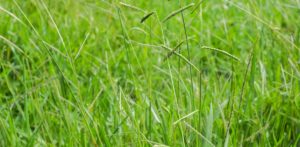
Location is everything! One consideration is that pollen counts tend to be lower on the coast, so beaches may be a good option. The desert, or alternatively snowy mountain tops, can also be ideal for pollen, although maybe not for summer travel. Does your vacation involve hiking or mountain climbing? Dust mites do not prefer elevations above 2,500 feet, so that may be a great choice as well. Wherever you decide to go check the allergen forecasts for that area. You should also check current pollen counts each day there. If high pollen counts are in the forecast, consider planning inside activities during your trip.
Checking pollen counts may not be the only forecast to make sure to monitor. As the temperatures rise, you can expect the humidity to rise as well. Many who suffer from asthma can find their condition aggravated by the high temperatures and humid climate. When planning your time outside during the summer, check the air quality for low humidity and low ozone days. You can also avoid triggers by planning around the heat of the day when possible.
Packing for Vacation
Although your favorite swimsuit may be more fun, allergy control measures should equally be at the highest priority. Staying compliant to your recommended treatment protocol in the days before you leave is crucial. These measures will support well-maintained symptoms while traveling, and for the duration of the trip.
- Make sure to pack allergy medication and immunotherapy in a carry-on bag if traveling by plane.
- Try to keep medications in original packaging and pack all medication and allergen immunotherapy in a separate, clear bag.
- Any liquid or gel medications or immunotherapy will need to individually be 3-4 ounces or smaller. Consider purchasing travel sizes if standard sizes do not meet this requirement.
- Pack 1-2 days of additional medication or immunotherapy than what will be needed in case of delay when traveling.
- It may be beneficial to set a reoccurring alarm on a phone before leaving. Normal routines may change with travel and vacation plans.
- Finally, are you traveling out of the country? If you are traveling to a non-English speaking location, bring a list of your allergies in the native language. You may also learn to say or write “I’m allergic to _____.” in the local language.
Additionally, do not forget to pack any hypoallergenic hygiene products that you regularly use. Examples might be sunscreen, after sun cream, lotions, ointments, body wash, or laundry detergent. When searching for accommodations, remember that more and more hotels offer items like mattress and pillow covers or hypoallergenic linens so you may not have to pack your own. It may also be helpful to ask about smoke free rooms, away from humid, mold friendly pool areas if possible. If pet dander is a concern, take note of whether the location is “pet friendly”.
Summer Allergy Avoidance Tips
Air in enclosed spaces such as planes and trains can sometimes be extremely dry. Consider investing in nasal saline spray or washes, as well as portable humidifier. A humidifier will likely also be beneficial if staying in a hotel for more than a night or two. Staying well hydrated with water and non-caffeinated beverages will also greatly help you combat drying out. If traveling by car, considering utilizing the heat or air conditioning and keeping windows closed. Also, turning on the heat or air 10 minutes before departure can help clear vents of any residual allergen particles.
While enjoying your destination, remember that peak pollen times are typically early in the day (specifically 5am 10am). Scheduling desired outdoor activities for later in the day or just before dusk may help to reduce exposures. Similarly to when you are home, a daily shower is helpful for allergen avoidance. Showering before bed will help to wash away allergens that have adhered themselves to your skin or hair. This is especially important to maintain so that your pillow, sheets, and the immediate space you breathe in all night is allergen free.
Insect Allergies
Another aspect of the summer allergy concerns may be insects. If stinging insect allergies are present planning ahead can alleviate a lot of anxiety and allow for a smooth trip. Always make sure to carry a minimum of two epinephrine auto injectors if it has been prescribed to you or a loved one. Make sure the epinephrine autoinjector is carried in a way it can be accessed and administered within 60 seconds of a need arising.
If you or a loved one does have life threatening allergies, it is a good idea to check with your health insurance and ensure you know where to seek medical care should the need arise while you are out of town. You may also consider carrying an allergy identification card. It can be helpful to keep a card in your wallet listing your allergies, and also emergency contact information and your healthcare provider information. This can be especially important for children who may be summer camps or staying overnight with friends or family.
Food Allergies
If food allergies are present, packing your own meals or snacks may make traveling easier. Preparing food yourself is always the safest option. Alternatively, research the local dining hot spots you wish to visit in advance of leaving for your trip. This allows you to identify safe selections from the menu or you can call to request proper menu accommodations. You may still consider packing your own snacks if you have food allergies. While it may be possible to plan meals around food allergies, snacks often present more of a challenge. Pack allergy friendly snacks, especially if lengthy plane rides are involved.
Amanda Hofmann, MPAS, PA-C, is a graduate of Duquesne University, in Pittsburgh, PA. After spending 8 years in clinical practice, she joined United Allergy Services where she is currently the Vice President of Clinical. Amanda is also the past president of the Association of PAs in Allergy, Asthma, and Immunology.
United Allergy Services is also on Facebook, LinkedIn, or Twitter. See other interesting and related articles on the UAS Blog.
Easter with Allergies
The Easter and Passover holidays are here! Holidays mean family centered fun, festive meals, and usually sweet treats to enjoy. For allergy suffers, however, they can sometimes be challenging to navigate. Aside from the usual pollen and food allergies, brightly dyed eggs, household pets, and sweet baby chicks and bunnies can also wreak havoc on the nose and chest. Here are some tips to navigate the upcoming holidays and ensure that you and your family celebrate safe and happy.
Easter and Food Allergy Considerations
Traditional holiday meals are at the cornerstone of Easter and Passover. Plan the meals out in advance and be mindful of any guests that may have a food allergy. Be flexible and try to switch ingredients for allergy-friendly alternatives, eliminate a recipe from the menu altogether, or take care to prepare allergy-friendly dishes separately from the other meals. If you are not sure if guests have a food allergy, consider printing recipes out for each of the dishes and allow people to determine if it’s a safe food for them to indulge in. Also consider avoiding a buffet style offering, or separating allergen safe foods from allergen containing foods in two different areas or tables.
Sweet Treats
These spring holidays typically mean chocolate and sweet treats to younger members of the family, or those young at heart. Try to again consider those guest and family members that may have allergies to things like chocolate, so they are not left sitting on the sidelines. Allergy to chocolate itself, or the cacao bean, is incredibly rare, however more commonly the offenders are milk, peanuts, tree nuts, soy, and corn. A little research will provide an array of options of dairy free or peanut/tree nut free brands of treats. Always check labels to see if the offending food in contained in the ingredients list, or mentions it was produced in a facility that also processes other allergen containing foods putting your loved one at risk of cross contamination.
Keep in mind most chocolate does contain soy in the form of soy lecithin to keep it solid at room temperature, and white chocolate commonly contains corn in the form of corn syrup. If the treats offered are of the homemade variety, it can be even more challenging for a food allergy sufferer due to lack of label to research ingredients.
If you suffer from food allergies, a good rule to follow if “If you can’t read it, don’t eat it”. Plan to bring some of your own safe snack or goodies, unless you can make sure your host prepared foods allergen free, safely away from other allergen containing food, and on a separate and thoroughly cleaned surface. In lieu of store bought or homemade edible treats, consider offering nonfood items for younger guests such as books, sporting goods, stickers, novelty items, or toys.
Easter Egg Related Allergies
Although the majority of food allergens are most offensive if ingested, it is important to consider that some people do have reactions or develop irritations from contact exposure to egg or the dyes used to make them bold and bright. If colorful dyed egg hunts are part of your spring holiday tradition, there are alternative ways to include everyone on the fun. Instead of using traditional eggs and egg dye, consider eggs made of wood, ceramic, or plastic, and consider natural dye alternatives. Other options include making gelatin eggs, egg sugar cookies for decorating, or decorating marshmallows in place of eggs. Also, consider replacing the hard-boiled egg on the Passover Seder plate with a ceramic or plastic egg to keep guests anxiety free.
If the above-mentioned allergies are life threatening for you or a loved one, always make sure to carry a minimum of two epinephrine auto injectors if it is prescribed. Make sure the epinephrine autoinjector is carried in a way it can be accessed and administered within 60 seconds of a need arising. If you or a loved one does have life threatening allergies, it is always a good idea to check with your health insurance and ensure you know where to seek medical care should the need arise if celebrating the Spring holidays out of town.
Pollen Considerations
Food allergens typically are the easiest to keep front of mind during the holidays, however equally as difficult for allergy suffers and arguably more difficult to avoid are the tree pollens and mold spores blowing in the air. These unwanted guests can ruin any picnic or outdoor gathering with nasal, sinus, eye, and chest symptoms. If there is both indoor and outdoor venues at the celebration location, try to minimize the time spent outdoors. If you are hosting the celebration, try to offer an indoor haven if planning to spend time outdoors, as well as keep windows and doors closed at the indoor space. Also, minimize the exposure to outdoor allergens while traveling to the destination by keeping windows up in the car and instead using the air conditioning.
Celebration Times
It is a good habit to always check pollen counts for the area where you will be celebrating. If you are planning the celebration, try to have it start mid-day or later due to peak pollen times typically occurring in the first half of the day (specifically 5am 10am). Also, it would be beneficial to plan the event outside of heavily grassy areas or those densely populated with trees. This may help to decrease the concentration of allergens in the air. If the celebration will be entirely outdoors with no indoor refuge, it is a good idea to make sure you are on top of your allergy medication or immunotherapy regimen before going. It may be wise to pack a few changes of clothing as well as wet wipes for the ability to remove pollen from your immediate environment every few hours.
Once you return home from the festivities, plan to shower or bathe before prioritizing any other activities. It is especially important to bathe before crawling into bed, to remove any allergens that have adhered themselves to your skin or hair. This is especially important before allowing them to have access to your pillow or sheets and being in the immediate space and air you breath in all night.
Easter and Passover Gifts or Decor
Many people choose to show their appreciation to their host or show their love to their family by bringing beautiful spring flowers or plants to the celebration. Unfortunately, people can have severe symptoms such as sneezing, along with nose and eye itching and watering related to the pollen, or just the smell of particular flowers. Even an asthma attack can be triggered from them. According to the American College of Allergy, Asthma and Immunology, there are many flowers you can get at a florist that produce little pollen. Look for tulips, roses, begonia, columbine, crocus, daffodil, and geraniums if you want to be safe.
Pet Allergies
We cannot forget about the cherished furry family members that may be in attendance for the spring holiday celebration. There may also be the propensity to give the give of baby chicks or bunnies this time of year. Dander, saliva, sweat, and urine from adorable dogs, cats, and even bunnies can trigger an allergic response in some people. If possible, try to keep pets confirmed to only a certain area of the celebration so that those that wish to enjoy them can, while those that are unable can find refuge elsewhere.
Make sure to thoroughly wash your hands before returning to an animal free area of the celebration, before partaking in shared food items, or before touching your face, mouth, or eyes. Also, make sure the recipient of a new spring pet is not triggered by them. Although recent literature has shown us a true allergy to bird feathers is rare, there are substantial amounts of dust mites found in feathers that can trigger unwanted allergy symptoms.
Allergy Treatment Options
If you or a loved are unsure whether tree pollen, grass pollen, mold spores, dust mites, or animal dander are potential allergy triggers and the cause of the nasal congestion, runny nose, post nasal drip, sneezing, and itchy watery eyes you have been suffering with, seeing your provider for an allergy test may provide the clarity they are looking for! Some providers may have the ability to access food concerns as well. And if you are already aware of true allergy triggers, but the spring allergy medication and avoidance measures are just not cutting it, there is still time to see your provider and discuss starting allergen immunotherapy.
____________________________________________________________________________________________________________________________________________
Amanda Hofmann, MPAS, PA-C, is a graduate of Duquesne University, in Pittsburgh, PA. After spending 8 years in clinical practice, she joined United Allergy Services where she is currently the Vice President of Clinical. Amanda is also the past president of the Association of PAs in Allergy, Asthma, and immunology.
United Allergy Services is also on Facebook, LinkedIn, or Twitter. See other interesting and related articles on the UAS Blog.
https://unitedallergyservices.com/blog/patients/5-ways-tame-seasonal-allergies/
Tips for Balancing Baseball and Allergies
Spring means longer days, warmer weather, and the beginnings of baseball! Unfortunately for some allergy sufferers, the start of the long-anticipated baseball season also means the time of year when allergens such as tree pollen are at an all-time high. Sneezing, wheezing, and itchy, watery eyes can make games or practice challenging for you or your little leaguer. Even more concerning? The thought of major league games and contact with baseball’s favorite sidekick...peanuts! You can still enjoy this spring and baseball season with a little planning for your allergies.
Eliminating all outdoor sports and activities may seem like the best decision, and for many, it is. However, if skipping out on baseball or other outdoor sports due to allergies just is not an option, we can help. Here are some tips that will help allergy suffers enjoy watching America’s pastime and PLAY BALL!
Airborne Allergy Tips
Check the weather forecast before heading to the game. When checking out the weather, it is good practice to also check the pollen counts in the area. Keep in mind that peak pollen times are typically in the first half of the day, specifically 5am 10am. Attending practices or games midday or in the afternoon may help to reduce exposures.
Baseball and outdoor allergies don't have to be in competition with one another. If you have a little leaguer, packing wet wipes is good practice. Wiping down their hands, face and neck can be helpful to combat those distracting allergy symptoms when out on the diamond. Also, make sure your favorite player is not relying on allergy medication that could make them drowsy. There are non-sedating medication options, or allergen immunotherapy that are worth discussing with their provider.
After a long practice or game, it is beneficial to change your clothing as soon as possible. Also helpful is an immediate shower, especially before crawling into bed. The shower will help to wash away any allergens that have adhered themselves to your skin or hair. This is especially important so that the allergens aren't transferred to your pillow or sheets, remaining in the immediate space you breathe in all night.
Planning for Stinging Insects and Food Allergies
If your allergies include stinging insects or even food, planning ahead can alleviate a lot of anxiety. Always make sure to carry a minimum of two epinephrine auto injectors if there is a known insect or food allergy. Make sure the epinephrine auto injectors can be accessed and administered within 60 seconds if the need arises.
If food allergies are present, especially peanut, legume, or tree nut, it can make the lyrics “Buy me some peanuts and Cracker Jacks” send shivers down your spine. Fortunately, most large baseball stadiums across the country have become aware of the dangers and distress surrounding food allergies and have started to offer peanut-free games or special accommodations for food allergy families with peanut-free designated seating. The Food Allergy Research and Education (FARE) organization typically releases an annual guide outlining which major league and minor league baseball stadiums offer peanut aware sporting events. Along with utilizing their helpful guide, FARE recommends “to reach out directly to the venue to learn more about their efforts”.
Some suggested questions to have ready when you contact the venue about are:
- Are there any [peanut] allergy friendly games, sections, or suites available?
- Does the venue utilize power washing for seating, and traffic pathways at the stadium?
- Can you find ingredient lists or are they available upon request at the concessions?
- Do they allow families to bring in their own safe meals and snacks?
- Are emergency responders available to the public at every game, and are their sections closer to these personnel?
Planning and communication are key to enjoying baseball season and balancing your outdoor allergies. Talk to family, friends, coaches, players, and venues, to create a plan that is right for your family. However, missing out on baseball season does not have to be part of that plan. If you or your loved ones are not quite sure if allergies are playing a role, or if the over-the-counter allergy medication just is not cutting it, you have options. There is still time to see your provider and discuss allergy testing and begin allergen immunotherapy.
About the Author
Amanda Hofmann, MPAS, PA-C, is a graduate of Duquesne University, in Pittsburgh, PA. After spending 8 years in clinical practice, she joined United Allergy Services where she is currently the Vice President of Clinical. Amanda is also the past president of the Association of PAs in Allergy, Asthma, and immunology.
United Allergy Services is also on Facebook, LinkedIn, or Twitter. See other interesting and related articles on the UAS Blog.
Tree Pollen Allergy
March is finally here, and that means so is Spring. Longer days, morning walks in the garden, rain showers and rainbows are excitedly on the horizon. However, if you have spring allergies you may be less excited about the season. Spring is typically defined as starting with the vernal equinox, and this year that is March 20. Of course, our allergies don't need a calendar to tell us that tree pollen, the main culprit of the sniffles and sneezes during spring allergy season, is already here!
Trees typically start producing pollen as early as January in the Southern areas of the U.S. The Northern and Central areas follow with pollen production sometime in February. One outlier, the Ashe Juniper Tree (commonly called Mountain Cedar) wreaks havoc in Oklahoma and Texas as early as December. Many trees will continue to produce pollen through June. Also, the milder the winter season, the earlier the trees begin producing pollen. Similarly, late winter or early spring snowfall leads to more pollen. The copious amounts of moisture produced when the snow melts allows a greater volume of pollen production.
Understanding Pollen
Pollen is a powdery substance made up of small spores that come from male trees and flowers. There are two primary types of pollen. The first pollen type, “Sticky Pollen” is produced by plants and trees that have bright and attractive flowers. This kind of pollen sticks to bees and is transported during flight, fertilizing other plants. These bright flowers are commonly thought to be spring allergy offenders. However, sticky pollen doesn't release much pollen into the air, so they are likely not driving most allergy symptoms.
The other type of pollen is “Wind-Blown Pollen”. This pollen comes from larger trees like pine and oak. The pollen is released in large quantities into the air, fertilizing other trees of the same species. The pollen that causes stereotypical allergy symptoms like nasal congestion, runny nose, and itchy eyes is usually the wind-blown pollen. This pollen is very small and light, and is easily spread by the wind for miles and miles.
Allergy sufferers can benefit from checking local pollen counts to determine the density of pollen in the air on any given day. Pollen counts are determined by collecting pollen on special rods. It is then counted under a microscope and calculated in grains per cubic meter of air. Pollen counts tend to be highest early in the day, or when wind picks up just before a large rainstorm. If you like dancing in the rain, however, you are in luck. During a rainstorm and immediately following, pollen becomes still and dormant due to the rain making it damp and heavy. As the air becomes warm and dry following the storm, the pollen count will become potent again.
Managing Tree Pollen Allergies
For tree pollen allergy sufferers, it is recommended to avoid densely wooded areas, especially in early spring when pollen is the most abundant. If possible, avoid planting trees around the house that can cause allergy symptoms. Pass on major tree offenders like oak, birch, maple, cedar, juniper, and eucalyptus (unless you can guarantee they are female trees). Instead, look for friendlier species such as dogwood, pear, plum, redbud, or crape myrtle.
Pollen counts are never zero, and allergy sufferers will not truly be able to avoid tree pollen in the spring. However, some practices may help alleviate the severity of symptoms. Try utilizing the air conditioner and keeping windows and doors closed at home and in the car. Also, using the dryer instead of hang drying clothing will help decrease pollen exposures. One benefit of COVID-19 is that wearing some masks will help to minimize the amount of pollen that reaches the nasal passages, especially when worn in outdoor settings. Tree pollen allergy suffers should also make a habit of changing their clothes after coming in from being outdoors, and bathing prior to getting into bed/laying on upholstered furniture.
If you know someone that has difficulty with morning walks in the garden and they are unsure whether tree pollen is a trigger for their spring nasal congestion, runny nose, post nasal drip, sneezing, and itchy watery eyes, you can suggest they see their provider for an allergy test. It may provide the clarity they are looking for!
______________________________________________________________________________________________________________________
Amanda Hofmann, MPAS, PA-C, is a graduate of Duquesne University, in Pittsburgh, PA, and spent 8 years in clinical practice before joining United Allergy Services. Amanda is a past president of the Association of PAs in Allergy, Asthma, and Immunology and currently serves as Vice President of Clinical at UAS.
For more interesting insight from United Allergy Services, visit us on Facebook, LinkedIn, or Twitter.
Valentine's Day Allergy Offenders
Valentine's Day can be intimidating for allergy suffers. Far too frequently sweethearts visit the emergency room instead of their favorite restaurant or fill the day with sneezes instead of smooches. Avoiding the most common Valentine’s Day allergy offenders is possible, and here are some tips to keep everyone safe.
The Nose Knows
Flowers on Valentine's Day is a classic way to show your love. Unfortunately, flower pollen can trigger severe symptoms such as sneezing, itchy nose, and itchy/watery eyes or even asthma attacks. Luckily for the lovers out there, according to the American College of Allergy, Asthma and Immunology, there are many flowers options that produce little pollen and still set the mood. Look for tulips, roses, begonia, columbine, crocus, daffodil and geraniums for your allergy suffering sweetheart.
Before we check the box for being safe in the scent department, consider other smell related concerns. It’s important to know physical symptoms such as headaches and sneezing can be triggered from just the smell of some flowers. Often, these symptoms can also be related to perfume or cologne as well. Although these reactions are not actually a true allergy, and instead are generally a reaction to odors created by volatile organic compounds, they can cause a Valentine's Day disaster.
Food Allergy Offenders
Also on the list of iconic Valentine’s Day allergy offenders is that delectable box of chocolates. Allergy to chocolate is rare, but most chocolate is made with milk, and many of the chocolate assortments contain tree nuts, peanuts, eggs, and other more common food allergens. Read all food labels to stay safe and be sure to take note of label warnings such as, “May contain” or “Processed in a facility”. If these warnings pertain to you, your Valentine’s Day may be sweeter without it.
If you or your Valentine have any food allergies, of course, be sure to carry your epinephrine autoinjector at all times. It’s always the most important accessory you can have! Here’s another helpful hint if food allergies are on the table; Protect your Valentine by calling ahead to that romantic restaurant to discuss the food allergy before you go. Make sure the kitchen and chef can be accommodating on a busy night like Valentine’s Day. Better yet, you might get extra points in the Cupid category if you roll up your sleeves and prepare all your Valentine’s favorites yourself. Added bonus? You won’t have to worry about finding the perfect facemask to match your outfit this year!
Gifts That Don't Keep Giving
If your Valentine has their heart set on jewelry, keep in mind that it can contain varying amounts of nickel. A contact allergy to nickel can lead to symptoms such as severe itching, blisters, and rash in the area where the jewelry touches the skin. Unlike allergy to flowers and foods, a reaction to a metal may take several days to develop after exposure. If baubles and jewels are the burning desire of your Valentine, however, don’t worry! Sticking to jewelry made with stainless steel, copper, platinum and 24 karat gold is usually a safe choice.
Finally, consider skipping the stuffed animals this year. The bigger the teddy bear, unfortunately, can mean the bigger the dust mite population that it ends up harboring. These mites are one of the most common causes of allergies and can be found in any fabric item. Much like pollen, they can bring on sneezing and other nasal symptoms, and even result in asthma flareups. Keep the temptation for the plush gifts away and make your Valentine your main squeeze instead!
See more news and insights from United Allergy Services on Facebook, LinkedIn, or Twitter.




